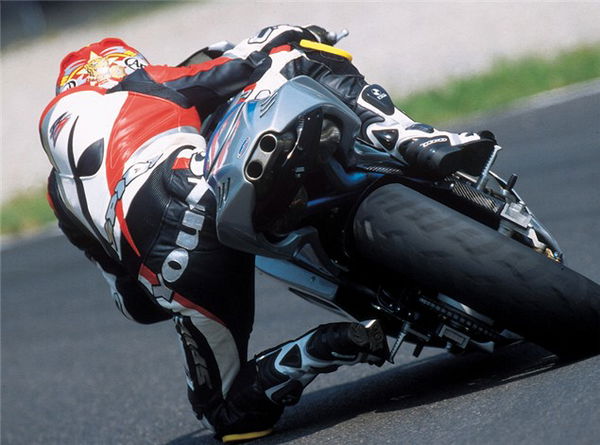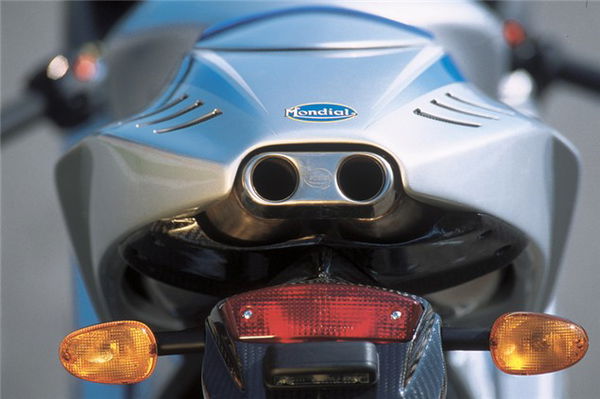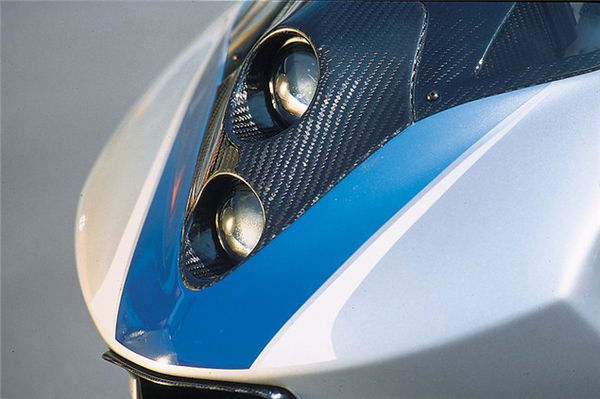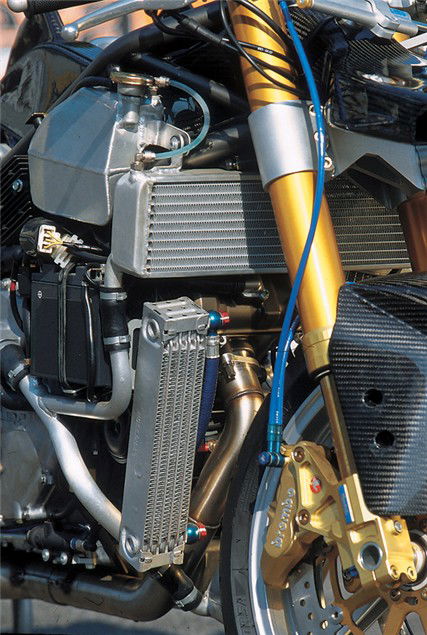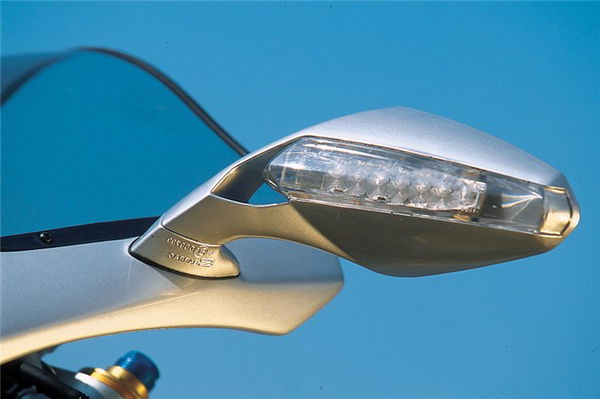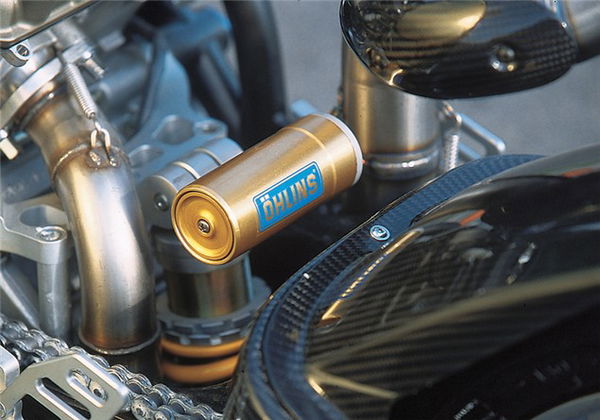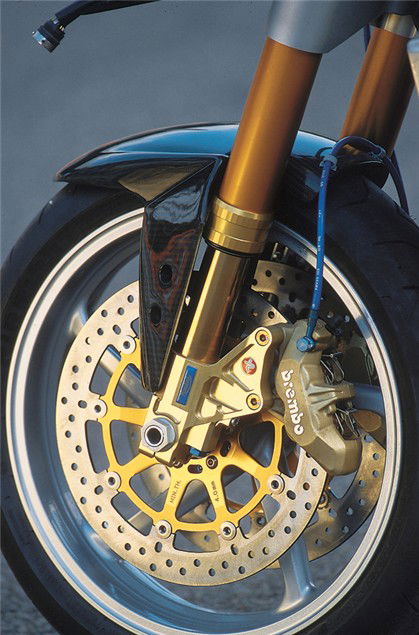First Ride: Mondial Piega-Monza
Probably the most beautiful production bike in the world, can the Mondial Piega-Monza handle as good as it looks? Daryll sneaked through quarantine to test the bike at Monza
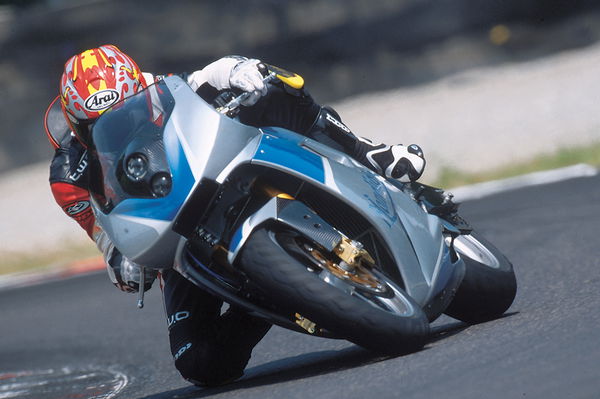

Road testing for TWO does have its perks from time to time and, for me, the launch of the new Mondial Piega has to rate as one of the top ones to date. Not only would I have a chance to ride the brand new and very limited edition Piega, the test would take place at one of the most famous circuits in the world, and to top it all I would be shown the way by Aaron Slight - can life get any sweeter?
We arrived at Autodromo Nazionale Monza just a week or so after the World Superbike circus had been in town. I watched the races on the television in awe as Hodgson fought hard to continue his winning streak despite Lavilla's awesome rear wheel smoking antics around the Parabolica - the black tyre marks were still as fresh as the day they were laid as I headed down the start / finish straight behind Slighty for the start of my second lap of the historic circuit. It was hard to take it all in, a new track to learn, following probably the greatest superbike rider never to have won a world championship, and all the time I'm trying to absorb as much as I could about the brand new Mondial Piega.
After a few laps Slighty pulls in and gestures for me to continue, giving me the chance to play some more without the pressure of trying to keep up with him - even though the last few laps must have felt like a slowing down lap in the pouring rain by his standards. The underseat titanium pipes growl as the motor screams down the main straight. Thankfully Mondial managed to get the exhaust system through European decibel regulations just before the limit was reduced. Brembo Series Oro calipers provide the stopping power with four-pot calipers up front with individual pads, and a twin pot Brembo caliper at the rear. Combine that with a set of trick looking blue plaited Kevlar brake lines and you've got a system more than capable of hauling the relatively lightweight Piega up in plenty of time for the first gear Prima Variante at the end of the straight.
We knew the Mondial Piega was going to be powered by a fairly stock Honda SP-1 motor, so nobody was expecting it to compete with the current batch of superbike missiles, but the Italian firm have developed their own exhaust system as well as improving the power further by changing the injection system, injection mapping, and airbox. The result is a credible140bhp at the crankshaft or in real world terms 122.5bhp at the rear wheel. Ok, so it's not right up there with the GSX-R, Blade and R1 but is on a par with the standard Ducati 999, and felt plenty quick enough around the fast Monza circuit. Just as I was getting into some sort of rhythm on board the Piega a careless fellow journo slipped off at the Prima Variante and the session was called to a halt.
Mondial History
The Milan-based Mondial factory originally built three-wheeler delivery vans, but founder Count Giuseppe Boselli's passion always lay in motorcycles. In 1945 he bought plans for a 4-stroke 125cc dohc engine and in 1948 the first Fratelli Boselli Mondial was born. Its performance was staggering for the time and immediately set a world speed record of 130kph for the flying kilometre, which was soon increased to 161kph.
Along with designer Oreste Drusinai, Mondial was the first motorcycle factory to produce a race bike with a full fairing fitted, the result for the opposition was devastating. With greater aerodynamics and outstanding engine performance the factory comfortably took the first Motorcycle World Championship in 1949 wining both the riders and constructors titles. Alongside the 125cc, Mondial also produced 160, 175 and 250cc versions, and between 1949 and 1967 won no fewer than 10 World Championship titles, 5 riders titles, 8 Italian Constructors' Championships, 8 national championships in France, Austria, Germany, Holland and the U K, not to mention 4 Shell Trophies and a TT victory.
During the fifties Mondial sold the twin-cam engine to privateers. In 1957 one Soichiro Honda was among those who used the Mondial engine as the base for a new race bike, which proved to be reasonably successful. Honda vowed to help the Italian factory should they ever need it, and over 40 years later the mighty corporation have returned the favour by supplying the SP-1 engines.
In 2000 Count Boselli's son, Pierluigi Bonini Boselli, and Roberto Ziletti re-launched Mondial.

Mondial Piega-Monza Review
Our flight to Milan was delayed by two hours, which meant I had little time to take a good look at the Piega before riding it, but once back in the pits I took some time to study the bike in more detail. From whatever angle you look, the Piega is truly a thing of beauty. The attention to detail is incredible. Parts such as suspension linkages, yokes, and the fully adjustable footrests have all been painstakingly machined from Ergal 7075 - an aluminium based material to you and me, which is stronger than steel and 70% lighter. Tolerances between components are miniscule. You'd struggle to squeeze a Rizla paper between the rear suspension linkage and the exhaust pipes, but even on the fairly well used test bikes there were no signs of them ever coming into contact.
The entire bodywork is made from carbon fibre, and again attention to detail is the key particularly on the inside of the cockpit where more carbon infill panels hide the any unsightly wiring looms and mounting points. Ingeniously the swing arm is constructed from the same tubular steel material as the frame and then completely encased in carbon fibre. The result is a work of art, a seamless solid looking carbon fibre unit that encompasses a rear hugger. Even the number plate mounting unit is an all carbon fibre affair, and taking a hacksaw to it should carry a custodial sentence. The models we were testing were fitted with a recently redesigned aluminium fuel tank, although a carbon fibre one is also available as an optional extra. The tank fitted to some of the earlier prototypes was criticised by some for being too big and square which hampered the rider. The later version still holds 18 litres but is narrower and more streamlined.
The second test session soon came around and it was back on the Piega for a few more laps. Now I had an idea of where the circuit was going I spent some time getting used to the bike. After the first session I had questioned the front end stability particularly exiting the Curva Grande and through the Curva Del Serraglio where the front end felt flighty and would shake its head slightly as I got on the power and straightened the bike up. Slighty told me to relax and let it get on with it as all the superbikes he's ridden have done the same on those parts of the circuit. It's
very bumpy; you're well leant over and hard on the gas, which is asking an awful lot of any bike. I suggested a couple of clicks on the Öhlins steering damper may do the trick, but Slighty said, "Naahh leave it mate, I've always ridden with the damper wound right off - it gives you more feedback". Well I couldn't really argue with him as he does still hold a lap record or two around the old circuit. Everywhere else the Piega was perfect. The chrome molybdenum vanadium steel chassis with 320mm progressive-rate Öhlins rear shock and 46mm Paioli/Kayaba usd front suspension were more than up to the job and offered enough adjustable settings even for the keenest of suspension fiddlers. The Piega is so well balanced that slamming it on its ear through the left-right-left Ascari curves was a breeze and the Pirelli Diablo Corsa tyres did all that was asked of them. I was really beginning to enjoy this bike; there was nothing about it that was hard work. With a seat height of 860mm it may have felt a little on the tall side in the pits for my relatively short 5'5" frame but once on board it fitted perfectly. The grunty twin cylinder motor pulled smoothly and effortlessly out of the tighter chicanes with absolutely no signs of any fuel injection flat spots. Unfortunately all good things must come to an end and the session was soon over. Even after my relatively brief encounter with the Piega I left Italy totally in love with it. Beautiful Italian styling combined with an ultra reliable Honda motor. Very pleasant indeed.
VERDICT
It would be very difficult to criticise the Piega in any way. It's fast enough, handles superbly, and is probably the most beautiful motorcycle on the market today. The seemingly hefty price tag of £21,500 can be justified in the knowledge that Mondial can only produce a maximum of 300 bikes per year, of which just 20 or so will reach these shores. So the chances of meeting another Piega owner whilst out on your weekly Sunday afternoon ride are somewhat slim. Exclusivity costs, and if you have got the money you'll have to get in quick as the first 200 Piega's have already been sold.
Mondial Piega-Monza Specs
TYPE - SUPERSPORTS
PRODUCTION DATE - 2003
PRICE NEW - £21,500
ENGINE CAPACITY - 999cc
POWER - 140bhp@9800rpm
TORQUE - 73.6lb.ft@8800rpm
WEIGHT - 179kg
FUEL CAPACITY - 18L
TOP SPEED - 160mph

